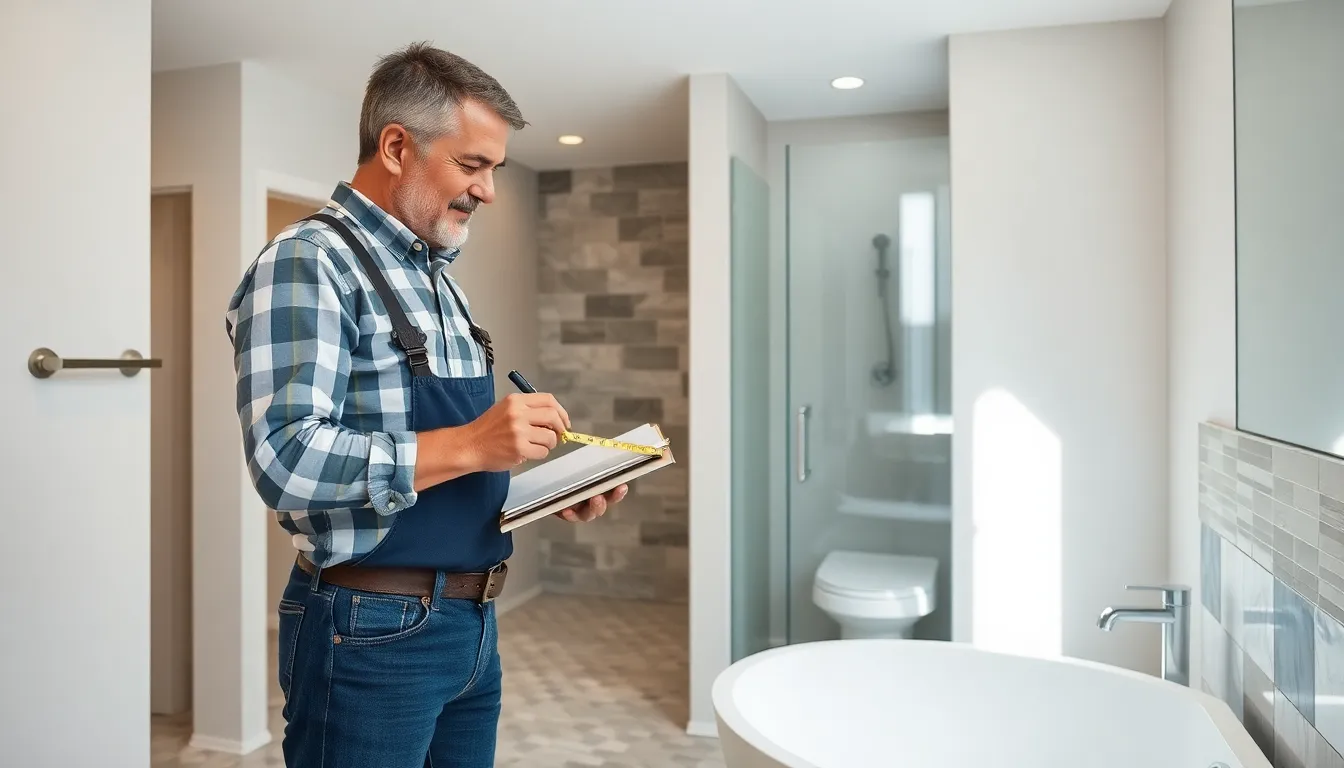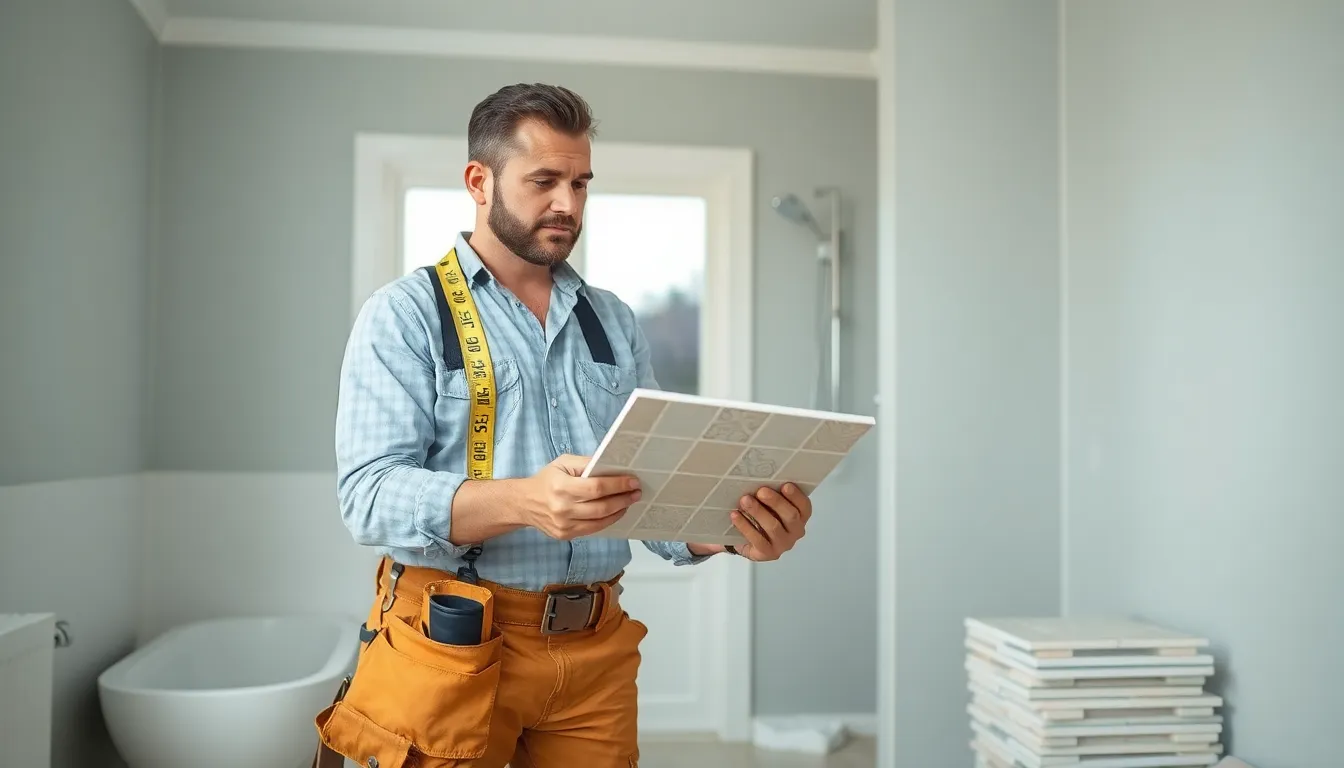Remodeling a bathroom can feel like preparing for a marathon—exciting yet daunting. Homeowners often wonder how long they’ll be living in a construction zone before they can finally enjoy that spa-like oasis. Spoiler alert: it’s not a quick trip to the grocery store.
From selecting tiles that would make even Pinterest proud to figuring out if that vintage clawfoot tub will fit through the door, a bathroom remodel takes time and patience. But don’t worry, it’s worth the wait! Understanding the timeline can help manage expectations and avoid any “surprise” visits to the neighbor’s bathroom. Buckle up as we dive into the nitty-gritty of bathroom remodeling timelines and help turn your dream space into reality without losing your sanity—or your sense of humor.
Table of Contents
ToggleUnderstanding Bathroom Remodeling
Bathroom remodeling involves multiple phases, each requiring careful consideration and planning. Significant tasks include design selection, fixture installation, and tile layout. Depending on these choices, the timeline can vary considerably.
Typical timelines for a full remodel span from four to eight weeks. Smaller updates might only take a few days, while extensive renovations could demand several months. In general, planning significantly impacts the remodel duration. The more preparation done beforehand, the smoother the process tends to be.
Communication with contractors plays a crucial role as well. Establishing a clear vision helps in aligning expectations and managing timelines. Homeowners should discuss schedules and potential delays early in the process to avoid surprises later.
Obtaining necessary permits also affects the remodeling duration. Certain municipalities require specific documentation before work can commence. This step may add weeks to the project timeline, emphasizing the need for early preparation.
During the remodeling phase, unforeseen challenges may arise. Plumbing issues, hidden mold, and structural problems often require extra time to address. Homeowners should remain flexible, keeping in mind that adjustments may be necessary to adapt to these hurdles.
Ultimately, understanding the entirety of the remodeling process, including planning and execution, leads to a successful outcome. By staying informed about potential timelines, homeowners can better navigate the journey toward achieving their dream bathroom.
Factors Influencing Remodel Duration

Understanding factors that affect the duration of a bathroom remodel is essential for setting realistic expectations. Homeowners can find several elements influencing the timeline, and these include project size and scope, design complexity, and material selection.
Project Size and Scope
The size and scope of the project play a significant role in determining how long the remodel takes. Larger bathrooms typically require more extensive work, leading to longer timelines. Smaller bathrooms may experience a quicker turnaround due to fewer fixtures and a simpler layout. Renovating one bathroom compared to multiple bathrooms also adds complexity. Homeowners can expect that comprehensive remodels, involving reconfiguration of spaces or moving plumbing, will extend the overall duration. Accurate estimates stem from assessing the specific project requirements.
Design Complexity
Design complexity significantly influences the timeline for a bathroom remodel. Intricate designs, custom cabinetry, or unique layouts typically require additional labor and time to execute properly. Utilizing detailed design plans and collaborating with skilled professionals ensures the project stays on track. Simple designs, such as standard layouts or minimalistic approaches, generally require less time to implement. Homeowners should prioritize clear communication with designers to align visions while minimizing potential delays caused by design adjustments during the remodeling process.
Material Selection
Material selection directly impacts the duration of the remodel. Choosing readily available materials often expedites the project timeline, enabling smoother transitions between phases. Special order materials or custom finishes could delay progress due to extended lead times. It’s essential for homeowners to make material selections early in the process to avoid unnecessary waiting. Additionally, the quality of materials may influence installation time; some high-end options require specialized installation techniques. Opting for standard options can streamline the project timeline and foster efficiency.
Typical Timeline for Bathroom Remodels
Understanding the timeline for a bathroom remodel helps in managing expectations. Several factors come into play, dictating how long each type of project may take.
Minor Remodels
Minor remodels typically span one to two weeks. Simple updates such as faucets, fixtures, and paint changes often fall under this category. These projects usually involve minimal labor and adjustments. Homeowners can complete tasks like replacing countertops or updating light fixtures quickly. With a well-defined plan, homeowners can see significant changes in a short amount of time. Therefore, focusing on readily available materials ensures faster completion.
Major Renovations
Major renovations generally take four to eight weeks. Extensive updates involving structural changes, new layouts, or complete overhauls of plumbing and electrical systems fall into this range. Coordinating multiple contractors often becomes necessary, which can add to the timeline. Projects like moving walls or adding storage will require careful planning and execution. Homeowners should also account for design approvals and permit acquisition, which can extend the process. Preparing for unexpected issues, such as plumbing problems or code violations, helps maintain a smoother timeline.
Tips to Expedite the Remodeling Process
Effective planning ensures a smoother and quicker bathroom remodel. Start by creating a detailed timeline that includes each phase of the project. Homeowners should prioritize design choices and material selections to avoid delays. Using modular designs can simplify the process and allow for adjustments without major overhauls. Clear communication with contractors about timelines and expectations helps keep the project on track.
Hiring the right professionals leads to significant efficiency. Choose experienced contractors who specialize in bathroom remodeling. Research their past work through reviews and references. Engaging a skilled designer can streamline design decisions and facilitate faster approvals. Discuss timelines upfront to ensure everyone is aligned on project schedules. Keeping consistent communication with the team promotes a collaborative atmosphere, reducing misunderstandings and enhancing project flow.
Common Delays to Anticipate
Unforeseen plumbing issues frequently arise during bathroom remodels. Homeowners might discover leaks or outdated pipes that require immediate attention, which can push back timelines significantly. Structural changes introduce their own delays, as unexpected repairs or reinforcements may be necessary.
Design approvals often consume extra time within the remodeling process. Designers may require multiple reviews of sketches or selections, extending initial timelines. Material availability presents another potential setback; special orders for unique tiles or fixtures can take longer than anticipated.
Permitting procedures are essential but can create bottlenecks. Local regulations dictate necessary permits, and delays in obtaining them can stall work. Homeowners should account for these timelines in their planning to avoid frustration.
Weather can play a significant role in outdoor renovations. Inclement conditions may delay exterior work, leading to additional waiting periods. Negative weather impacts remain unpredictable, but awareness can prepare homeowners for adjustments.
Employee shortages are increasingly common in the construction industry. A lack of available skilled workers may slow down progress, especially during peak remodeling seasons. Selecting trusted contractors ensures efficient timelines, despite potential workforce challenges.
Finally, communication gaps often lead to misunderstandings. Homeowners and contractors must maintain clear dialogue to prevent setbacks from misaligned expectations. Establishing a collaborative environment enhances workflow and mitigates delays throughout the remodeling journey.
Remodeling a bathroom can be an exciting yet challenging journey. Homeowners should embrace the process while remaining flexible to the unexpected. By understanding the factors that influence the timeline and communicating effectively with contractors, they can navigate the complexities with confidence.
Planning and preparation are crucial in minimizing delays and ensuring a smooth experience. With realistic expectations and a well-thought-out approach, transforming a bathroom into a dream space becomes not just achievable but also enjoyable. Ultimately, patience and proactive management will lead to a successful remodel that enhances both functionality and aesthetics.




